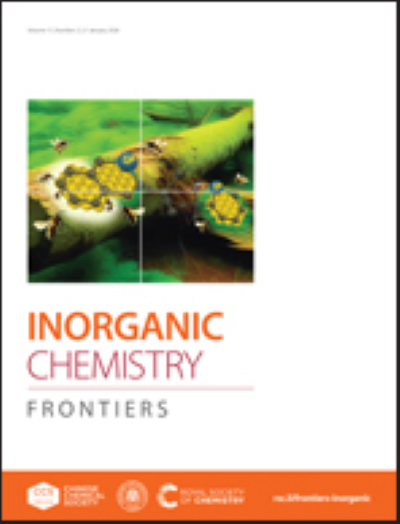Tailoring the Catalytic Microenvironment of large-scale Cu foil with Polyaniline to Enhance CH4 Selectivity in CO2 Electroreduction
IF 6.1
1区 化学
Q1 CHEMISTRY, INORGANIC & NUCLEAR
引用次数: 0
Abstract
Electrochemical conversion of CO2 into liquid fuels and value-added chemicals is a promising approach to close the carbon cycle. Copper (Cu) is considered as one of the most effective catalysts for electrocatalytic CO2 reduction reaction (CO2RR). However, its utilization potentiality is limited by poor selectivity for hydrocarbon products and the competing hydrogen evolution reaction (HER). In this study, we present a strategy to suppress the HER process and enhance the CH4 selectivity of large-scale Cu foil toward CO2RR. By coating the Cu foil surface with a porous polyaniline (PANI) layer, the H2 Faradaic efficiency (FE) reduces from 60% to 18%. Moreover, the FE of hydrocarbons increases dramatically from 25% to 80%, and the FE of dominant product CH4 is high up to 62%. The in situ electrochemical attenuated total reflection Fourier transform infrared spectroscopy (in situ ATR-FTIR) and density functional theory (DFT) calculations are conducted to elucidate the mechanism. The enhanced performance of Cu-PANI in CO2RR is mainly attributed to the porous PANI layer, which facilitates CO2 adsorption and mass transport. This leads to a reversal in the energy barrier for the rate-determining steps between HER and CO2RR, significantly inhibiting HER and enhancing CO2RR activity. Additionally, Cu-PANI promotes the hydrogenation of *CO to *CHO, resulting in higher methane selectivity. This work provides a promising strategy for designing efficient large-scale Cu-based catalysts with high CH4 catalytic activity and selectivity.聚苯胺修饰铜箔微环境提高CO2电还原中CH4选择性
电化学将二氧化碳转化为液体燃料和增值化学品是一种很有前途的关闭碳循环的方法。铜(Cu)被认为是电催化CO2还原反应(CO2RR)最有效的催化剂之一。但其对烃类产物的选择性差和析氢反应的竞争性限制了其利用潜力。在这项研究中,我们提出了一种抑制HER过程并提高大规模铜箔对CO2RR的CH4选择性的策略。通过在铜箔表面涂覆多孔聚苯胺(PANI)层,H2的法拉第效率(FE)从60%降低到18%。烃类的FE从25%急剧增加到80%,优势产物CH4的FE高达62%。通过原位电化学衰减全反射傅立叶变换红外光谱(in situ ATR-FTIR)和密度泛函理论(DFT)计算来阐明机理。Cu-PANI在CO2RR中的性能增强主要是由于多孔PANI层有利于CO2的吸附和传质。这导致HER和CO2RR之间速率决定步骤的能量势垒发生逆转,显著抑制HER并增强CO2RR活性。此外,Cu-PANI促进*CO加氢为*CHO,从而提高甲烷选择性。本研究为设计具有高CH4催化活性和选择性的高效大规模cu基催化剂提供了一种有希望的策略。
本文章由计算机程序翻译,如有差异,请以英文原文为准。
求助全文
约1分钟内获得全文
求助全文
来源期刊

Inorganic Chemistry Frontiers
CHEMISTRY, INORGANIC & NUCLEAR-
CiteScore
10.40
自引率
7.10%
发文量
587
审稿时长
1.2 months
期刊介绍:
The international, high quality journal for interdisciplinary research between inorganic chemistry and related subjects
 求助内容:
求助内容: 应助结果提醒方式:
应助结果提醒方式:


